Some say it is the most colourful extravaganza in Northeast India, while it also fondly called as the Festival of Festivals. Yes, we are talking of the Hornbill Festival in Nagaland, which is also perhaps the best introduction to the traditional and cultural montage of Nagaland. And of course, our Festivals of India series could have never been completed without a mention of this breathtaking celebration of life, culture, cuisine and tribes of Nagaland.
About this blog: This article is a part of our Festivals of India Series where we give you an in depth guide about a festival. This blog is about the famous Hornbill Festival celebrated in Nagaland. While the words are mine, the person behind the visual journey is Sabyasachi Talukdar. This blog is your one stop guide to the Hornbill Festival in India answering all your queries about what, where and why.
Hornbill Festival is an annual cultural spectacle held in the first week of December. Nagaland, located in the far northeast corner of India is an intriguing place. This remote land gets vibrant and colourful during these 10 days. While you visit the Hornbill Festival, you can also go for the Dzukou Valley Trek and make a trip to other places in Nagaland like Pfutsero, Dzuleke and Kohima.

What is the Hornbill Festival?
Hornbill Festival is a 10 day cultural extravaganza held every year between 1-10 December to encourage, nurture and promote the rich, vibrant and diverse culture of Naga tribes and people. . It is the land of folklore and fables and of the brave warriors and hunters who have been eulogized by the folk songs of the land. Hornbill Festival is the celebration of all these and more.
The festival celebrates the 16 tribes of Nagaland through music, dance, art, food, attires, traditional sports and more. Conceptualized by the Government of Nagaland, the festival first started in the year 2000.
The Hornbill Festival is showcasing the cultural canvas of Nagaland as well as Northeast India to the outer world for the last few years while also making a positive impact on tourism of the state.
The entire spectacle is an absolute delight to watch. Just think that you can walk around and see all the tribes of Nagaland at a single venue. You can witness the traditional war dance of the Nagas, their folk music and can get a glimpse of their unique tradition.

The colourful tribes of Nagaland
We had heard about the 16 tribes of Nagaland already. But did you know that each tribes are different in their customs, language, attires and culture.
The names of the 16 major tribes of Nagaland are:
- Angami
- Ao
- Chakhesang
- Chang
- Kachari
- Khiamniungan
- Konyak
- Kuki
- Lotha
- Phom
- Pochury
- Rengma
- Sangtam
- Sumi
- Yimchunger
- Zeme-Liangmai (Zeliang)
And then there are sub-tribes as well. We heard that the sub-tribes also have their own dialect. Just imagine the sheer diversity in the language and dialect of Nagaland!

Why is the Hornbill Festival celebrated?
The Hornbill Festival is named after the hornbills – the birds widely respected and depicted in the Naga folklore and songs.
Ironically, the bird was almost extinct in Nagaland due to excessive hunting and killing, a culture that is deeply ingrained. The feathers of the hornbills were used as decoration in the headgears of the Naga warriors and people.
The government had tried to persuade the tribes to use fake feathers instead of killing the birds for long, but did not quite find success. However, with time, the local community understood about the importance of preservation of the wildlife. Also several dialogues were held with and within the Naga tribesmen on conservation of the hornbills. Ways were thought to turn the predators into protectors.
Naming the festival as Hornbill Festival was one of the steps in the process.
The Hornbill Festival runs from December 1, which is also the Nagaland Formation Day. The timing is quite apt. Hornbill Festival is organized by the State Government bringing together all the different cultures and festivals of the 16 Naga tribes under one platform.
When started in 2000, the festival used to feature traditional games, folk songs mostly about wars and harvest and folk dance. Today it is a grand affair and hugely successful inviting many foreign tourists from around the world.
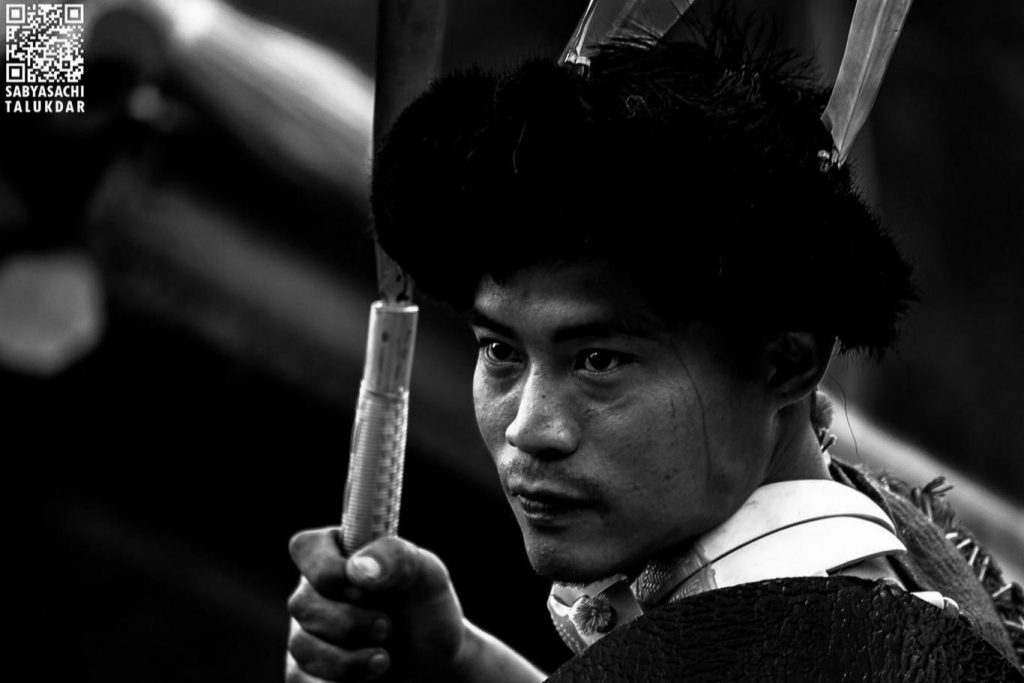
Where is the Hornbill Festival Celebrated?
The Hornbill Festival is celebrated at the festival grounds of Kisama Heritage Village in Nagaland. Kisama is about 5 km from Kohima, the capital of Nagaland. You can avail shared taxis from Kohima to get to Kisama.
The performances usually start by 9.30 AM everyday. You can buy entry tickets at the entry gates and cross the security check to enter the festival venue.
Where is Nagaland?
Nagaland is located in the northeast part of India and is part of the Seven Sister States. The word “Nagaland” literally means the land of the hospitable and friendly Nagas, the collective name of the 16 tribes residing in Nagaland.
Nagaland shares its borders with Assam, Arunachal Pradesh and Manipur and also a large part of its border with Myanmar.
A mountainous state, Nagaland is known for its beautiful green valleys, winding pathways, serrated ridges and the dense evergreen forests.

What to do in Hornbill Festival?
Undoubtedly Hornbill Festival is Nagaland’s biggest and most boisterous fiesta. And you would land totally headlong into this jamboree of music, dance, arts and whatnot! There is no dearth of things to do in Hornbill Festival.
The shows start at around 9.30 AM and the order of events are more or less the same. The shows, music and tribes usually change daily. We think 3 to 4 days are enough to get a good experience of hornbill Festival. So here are your must do list of things in Hornbill Festival.
Visit the Morungs
Wandering around the Morungs is perhaps the best thing that you can do at Hornbill Festival. The best time to visit them is early morning just before the start of performances. That is the time for the performers to get dressed up and you can get some lovely portraits. But please ask them before taking any photographs. Though you will see a large number of photographs in the ground, permission to photographs is not explicit.

What are Morungs?
Well, the Morungs are community spaces in the villages of Nagaland where young boys are sent. In these Morungs the young Naga boys learn about the history, heritage and culture of their village and tribe. They learn the art of singing and dancing.
Morungs are the place where the legends and folks tales and stories of the past are passed down to the younger generation.
Along with mastering the fine arts, the young boys also master the art of warfare and hunting. The Morungs are their practice ground.
The Morungs are the places where values are imbibed into the minds of these boys and they are taught the essential life skills.
If I had to say it in short, the Morungs are like dormitories where the Naga boys spent their youth learning to be better and brighter men. Each Morung has their own sets of rules and regulations that the members have to adhere to, otherwise they will be punished. In facts, it was the place where the village boys were turned to worthwhile person.
The Morungs are usually located in the centre of the village and is of great pride to each Naga village.
Well, in Hornbill Festival, makeshift Morungs are made by each of the tribes. These temporary settlements are made for the tribal communities where they enact their lifestyle for us to see and know.
The Morungs are located on a nearby hilly area on different levels. Each of the community has their traditional hut made from bamboo, hay and wood. The entrance of the Morungs are decorated with tribal weapons or an animal skull or some symbols. In front of each hut, the name of the tribe is depicted along with some information about the tribal community, the village and their culture. We had seen such traditional huts at a Mizo tribal village in Reiek as well.
Inside the Morungs, you can probably see elders of the community sitting around a central fireplace.
The men and women in their colourful and resplendent attire are found outside the Morungs. There are also bamboo benches outside the hut. The communities also make stalls to sell their handicrafts, jewellery, attires, decorative items and food items like pickles and drinks. These Morungs in Hornbill Festival are a world in themselves that you cannot get enough of.
Infact, we think, this is the place where you might spend your maximum time in Hornbill Festival.
Have conversations with the different tribes

When visiting a Morung, strike up a conversation with the different tribal communities. Ask them questions. Ask about their lifestyle, culture, older days and headhunting days. They will all be happy to converse with you and tell you some wonderful stories about them.
The fisrat day of the Hornbill Festival is the best time to indulge in conversation with the people. Cultural performances for the first day are usually in the evening and everyone is in a happy mood. It will be easier to strike a conversation with them.
See the communities practice before their actual performance
The Morungs are the place where the communities practice their performances and moves before enacting them in front of the crowd. So you can get some good photographs of the practice session.
Enjoy the spectacular showcase of cultural performance

The cultural performance at the Hornbill Festival is perhaps the star attraction. Every day, the tribes take turn to showcase traditional dance and songs in the festival grounds. This is something that you cannot miss.
Each of the tribal community performs their folk dance while they narrate briefly about the dance and the occasion they are celebrating. It can be a festival, harvest, marriage, war or victory dance. The dancers wear colourful attires and adorn stunning headgears. The dances accompanied by equally eclectic folk music transcend all boundaries. You, as a spectator will be enthralled and amazed by the well synchronized choreography. You will understand why Hornbill Festival is called the Festival of Festivals!
Hornbill Festival not only showcases the traditional dances from Nagaland, but also the dances from the other northeast states. Bihu from Assam, Wangala dance by the Garos of Meghalaya, Manipuri dance and many others are performed in the amphitheater of Hornbill Festival. The entire presentation is a visual treat!
Taste the traditional Naga Food
Food is one of the reasons we travel. After all, tasting the local food is like having a taste of the culture. Hornbill Festival celebrates the traditional Naga cuisine. After all, Nagaland is food lovers’ paradise, especially for the non-vegetarians.
At the Morungs in Hornbill Festival, you can also taste the traditional Naga food prepared by each of the tribes. Infact, you can sit with the elders inside the traditional Morungs and interact with them while having a taste of the land. Language is not much of a barrier because the younger generation of today understands English and they will happily serve as the interprator!
As mentioned before, the Morungs have their own food stalls and you can dive into your own food adventure right here at the Hornbill Festival.
Also, various food competitions are held at the Hornbill Festival like chilli eating (yes, the Naga variety!), pork eating contest etc. Well, I might try for the pork eating one, but would definitely not fancy eating the hot Naga chillies in a competition, no matter what the prize is! But for the sake of it, you should try tasting a fresh Naga chili once.
Various food items like pork preparations, chicken with bamboo shoot, brown rice, various rice cakes, beef pickles and a variety of chutneys and pickles are available for your gastronomical adventure. Someone once told me for appreciating Naga food you must have an acquired taste. Well, personally while starting I had felt the flavor a bit too strong. But now I think I have prepared my palate to appreciate and even gorge on Naga delicacies.
The vegetarians need not worry. You can taste the variety of rice cakes. Vegetarian food is available at Hortispace opposite the main festival venue. Farmers from Nagaland display their local produce there. You will see local grown tomatoes, carrots, lemons, pineapple and oranges (fruit of the season) in abundance there. And believe me the pineapples and oranges are not something that you would get in the plains. The taste is heavenly!

Drink Rice Beer
After, having all the tasty Naga food, rinse it down with a glass of local rice beer. Well, in Nagaland, alcohol is banned, but that does not mean that you cannot have liquor at Hornbill Festival.
Simply enjoy the local rice beer, the most popular drink there. It is also relatively cheap.
Music & Rock Concerts
It would be quite an injustice if I do not mention about the music of Hornbill Festival. Nagaland itself is known for western music. Infact, entire Northeast is known for rock music. You can expect a few rock music performances in Hornbill Festival as well.
The Hornbill International Rock Contest: This rock music contest is discontinued since 2019 and is renamed as The Great Hornbill Rock. Earlier it was held at the Hornbill Festival venue and rock bands from all over India used to take part in it vying for good prize. While regular concerts will be held at Kisama, multiple concerts will be organized at different venues in Kohima.
Shop for souvenirs
Nagaland is a colourful place. Witrh so many tribes and their colourful attires, there is a riot of colour everywhere. The Morungs at the Hornbill Festival display their handicraft and artwork for sale. These handicrafts are quite beautiful and buying them helps the villagers directly. So do not shy away from buying a few souvenirs for yourself.
Naga bead Jewelery
The Nagas wear a lot of ornaments. Most of them are made from bead, wood, silver, brass, ivory and animal bone. Many tribes have a history of hunting and they adorn themselves with dyed animal hair.
While you may not buy jewellery made of bone, but you can definitely buy and try one of the beaded jewellery.

Naga Shawls and costumes
The costumes of the Nagas are quite colourful. Their traditional clothes are made keeping in mind their historical past. Hornbill feathers are also used in the headgears and attires. Each of the 16 tribes have their own costumes.
Naga shawls can be quite a beautiful souvenir. The shawls also have a different pattern for each tribe. Also, the pattern of the shawl depicts the role of the person in the community. You can understand the social status of the person by taking a look at the shawl he is wearing.
While the Naga shawls are quite interesting having woven the social fabric as well, the shawls sold for the tourists need not be that decorative. The Naga Shawls are usually made in bright colours and are of good quality. I own a Naga shawl which is quite a prized possession for me.
How to reach Kohima, Nagaland?
It is not Kohima (though it is the capital city), but Dimapur in Nagaland that has the airport and the railway station. Dimapur is the border district and town between Assam and Nagaland along the banks of the Dhansiri River. Dimapur once used to be the capital of the Kachari Kingdom.
Today the town is one of the busiest in Nagaland and is also the commercial hub of the state and is also the gateway to Nagaland.
The best way to reach Nagaland is to take a flight or train to Dimapur and then take a taxi or bus to Kohima.
By Flight
The easiest way to reach Nagaland is to take a flight to Dimapur (DMU). Dimapur has direct connecting flights from Kolkata, Guwahati, Imphal and New Delhi.
By Train
You can also reach Dimapur by taking a train from Guwahati, Sealdah or New Delhi. You can take the New Delhi – Dibrugarh Rajdhani Express to reach Dimapur. A few night trains are also available from Guwahati to Dimapur as well.
By Bus
The cheapest option to reach Dimapur will be by taking an overnight bus from Guwahati. But be prepared for a very long and bumpy ride through the treacherous and bumpy mountain roads.
From Dimapur, you can take a shared or reserved taxi or even a bus to Kohima. The distance is about 75 km and it takes arounf 3 hours to reach. The Taxi Stand is located just adjacent to the railway station. Shared taxi will cost you about Rs300 while the bus fare is about Rs. 100.
The road conditions are pretty bad and so be prepared for a dusty and bumpy ride.
How to Reach the Kisama Heritage Village (Hornbill Festival Venue)?
You will get shared and private taxis from Kohima to the festival venue at Kisama Heritage village, located about 12 km from Kohima.
You will get shared cabs and buses from Network Bus Station, also called Network Travels AOC Bus Stop. From here, you will get buses and shared sumos for not only Kisama, but also towards other villages like Kigwema, Vishwema, Zakhama etc.
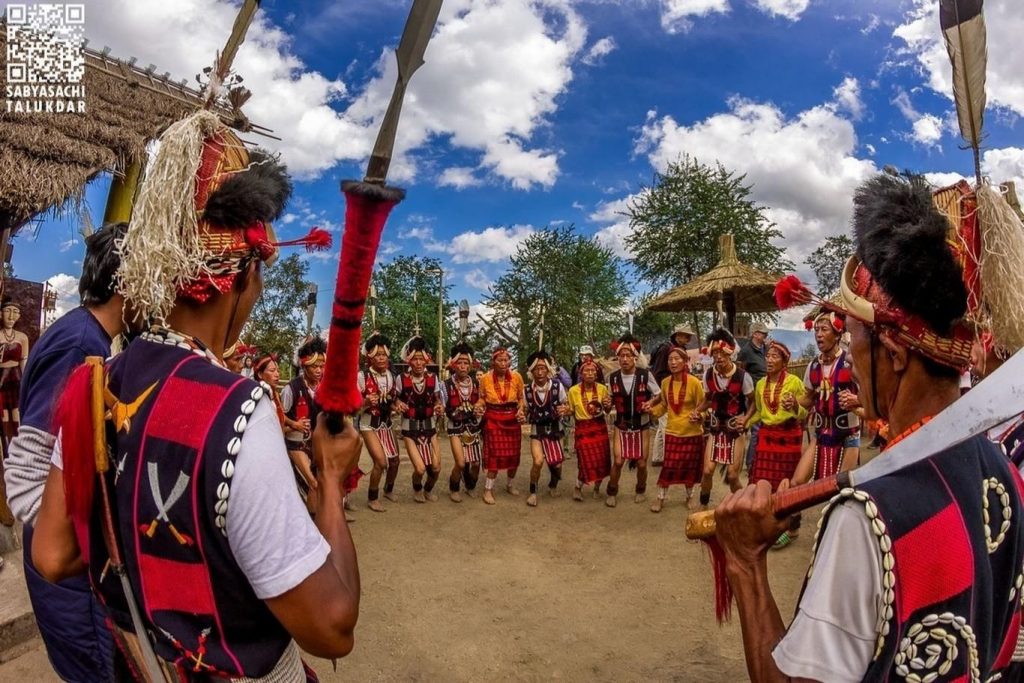
How to get ILP for Nagaland?
All Indians visiting Nagaland require an Inner Line Permit (ILP) to enter Nagaland. You can get the permits at the Office of Deputy Resident Commissiner at New Delhi, Kolkata, Guwahati and Shillong.
You can also get ILP on arrival at Dimapur. Visit the DC Office at Dimapur to apply for your ILP. It is better to arrive at Dimapur early in the morning so that you get your ILP done by noon. After that you can proceed towards Kohima.
Now, only Indian tourists can also apply ILP online.
For an ILP, you would need a passport sized photograph and your Identity and residential proof. ILP is valid for 15 – 30 days in Nagaland.
Where to stay during the Hornbill Festival?
During the Hornbill Festival, Kohima receives a lot of tourist from around the world and it will be crowded. Prices will also be high. There are a number of hotels and homestays in Kohima where you can stay during the duration of the festival.
However, the most popular and economical stays are the camp around Kisama. Camping here does not mean the luxury camps of Rajasthan. These are our sturdy tents put up for tourists only during the time of Hornbill Festival. These tents are quite adequate for a few days stay near the venue. If you wish to stay in tents, we would recommend you to carry your own sleeping bag. This one, we suually recommend for almost all outdoorsy places.
There are also a few homestays and guesthouses in Kisama where you can stay.
Remember that hotels and homestays usually fill up quite fast during the Hornbill Festival. But that does not mean that you will not get a place to stay. Remember, we always say, “there is always a stay”! You will definitely find a place to stay in the campsite in Kisama.
The tents will provide you a clean oudoor toilet and also a campfire to cosy around in the evening. Just think! You will be at Hornbill Festival. Who needs to be inside the tent for long other than sleeping?
A tentative Hornbill Festival Itinerary
Day 1: Dimapur to Kohima
Day 2: Full day at Hornbill Festival Venue at Kisama Heritage Village
Day 3: Full day at Hornbill Festival Venue at Kisama Heritage Village (I highly recommend this day at Kisama, but you can skip it if you are on a tight schedule)
Day 4: Explore Kohima and Khonoma
Day 5: Dzukou Valley Trek
Day 6: Back to Kohima
What other places can you visit during the Hornbill Festival?
Since you will be visiting Nagaland, Hornbill Festival should not be the only thing that you do there. There are a number of places you can explore.
Kohima
Kohima itself is a quaint town and deserves your attention. Visit the WWII Cemetery and the Kohima market to get a glimpse of the past and present of Nagaland. Nagaland is a predominantly Christian State. Visit the Kohima Night Markets to get a glimpse of Christmas markets and celebrations.
Dzukou Valley and Japfu Peak
The pictures of emerald green rolling valleys looking absolutely like heaven that you see in the internet are of Dzukou Valley. Dzukou Valley is one of the easiest and shortest treks in Northeast India. The starting point of the trek is merely 20 km from Kohima and 10 km from Kisama, the venue of the Hornbill Festival. The trek is absolutely beautiful.
Explore the nearby villages
You can explore the nearby villages of Khonoma, Jakhama, Touphema and Dzuleke. Khonoma is said to be the first green village of Asia. All these villages are within 20 km from Kohima city.
Pfutsero
Pfutsero is the highest and coldest town in Nagaland. It is located about 60 km from Kohima and 40 km from Kisama. However, the main attraction of this village is its cherry blossoms.

Helpful Travel Tips for Hornbill Festival
Hornbill Festival is surely a great event and you will probably have one of your greatest times there. But do keep a few things in mind while making a trip to the Hornbill Festival.
Accommodation
Hornbill Festival is quite popular and the hotels and accommodations get filled up quite fast in Kohima. So book your accommodations well in advance.
We recommend you to get a homestay or camping facility near Kisama, the festival venue. This will make your life much easier. You will be relieved of the long traffic jams between Kohima and Kisama.
If you opt for camping, bring your own sleeping bags, pillows, towel, torch and any other equipment that you feel necessary.

What to Pack
December is winter in Nagaland. The morning will be bright and sunny, but the evenings and nights are freezing cold. So carry your woolens, jackets, gloves, caps, socks and others adequately.
Do carry comfortable walking shoes as you have to walk a lot in the Hornbill festival venue.
Be Respectful
There will be many things that you might not be according to your taste at Hornbill Festival. Even if you do not like something, be respectful to the tribes and the people. It is their cultural heritage they are showcasing. Everyone, I repeat, everyone has their right to practice their rituals, follow their traditions, dress and eat as they like. If you do not like it, stay away from it (I always keep telling this). Do not indulge into any fights and arguments with the local people.
Entry Fee at Hornbill Festival
If you are staying at Kisama, the festival premises, then there are no entry fees. However, if you are commuting from Kohima everyday, then you have to pay a certain entry fee.
- Entry Fee: INR 20
- Camera Fee: INR 30
- Video Camera Fee: INR 70
Get Acquainted with Rice Beer!
Nagaland is an apparently a dry state, meaning sale of alcohol is banned. However, you will get the local rice beer in plenty. If you do not want to drink rice beer, then you should bring your own.
Mobile network at Hornbill Festival
Mobile network works quite well in the festival venue. Wifi, though, might be intermittent.
Either stay for the inauguration or stay on the last day of the festival if you do not plan to stay for all the 10 days of Hornbill Festival.

Is Hornbill Festival overhyped?
Hornbill Festival is a celebration. While in the last few years, we have heard from various travellers that Hornbill Festival has become overhyped and the festival has become a crowded place. We, however feel that Hornbill Festival is a great introduction to the cultural diversity of Northeast India. Even if you encounter a lot of tourists at Hornbill, the festival is still going to blow your mind away.
Portraits from Hornbill Festival, Nagaland
Here are a few faces and moments from the Hornbill Festival.




About Sabyasachi: For us, Sabyasachi is the soft-spoken guy who clicks amazing photographs and writes equally well. We met him for the first time at Bow Barracks in Kolkata.
In his own words, he is an engineer by brain, photographer by heart, writer by soul, traveller by feet and a filmmaker by memories! He has his mind in Assam, heart in Northeast (just like us!) and his soul is travelling across the globe. You can find his work at his Website. Do check out his Instagram and Youtube for some amazing work.
Have you visited Hornbill Festival? Please let us know your thoughts on this colourful festival by commenting below. If you liked the article, please do encourage us by commenting and sharing it with your friends, families and neighbours. We promise to create more better content for you!
Please Pin it for a later read!


Reproduction of the content, including the photographs without prior consent/permission of the writer and photographer, is not encouraged at all and a violation of the same will attract legal action. If you need anything, write to us at info@taleof2backpackers.com

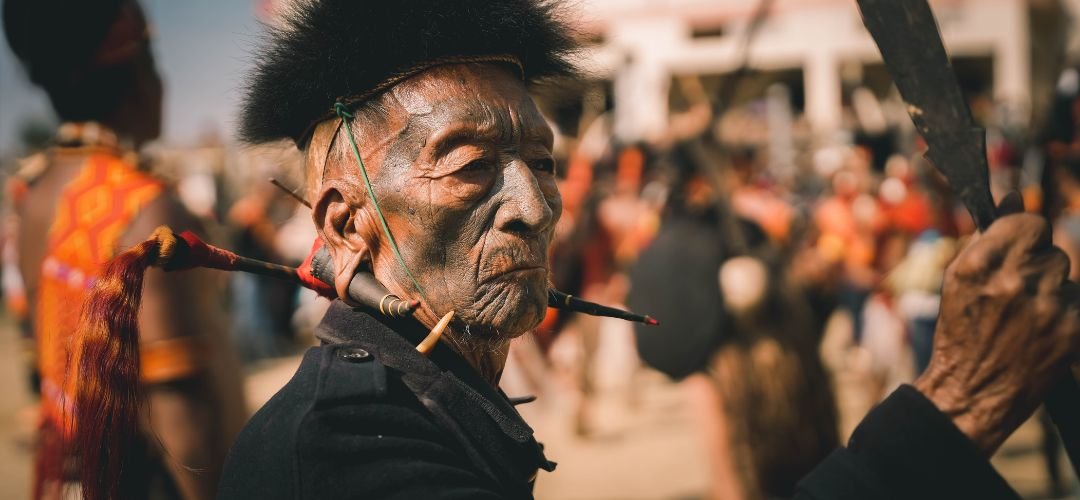







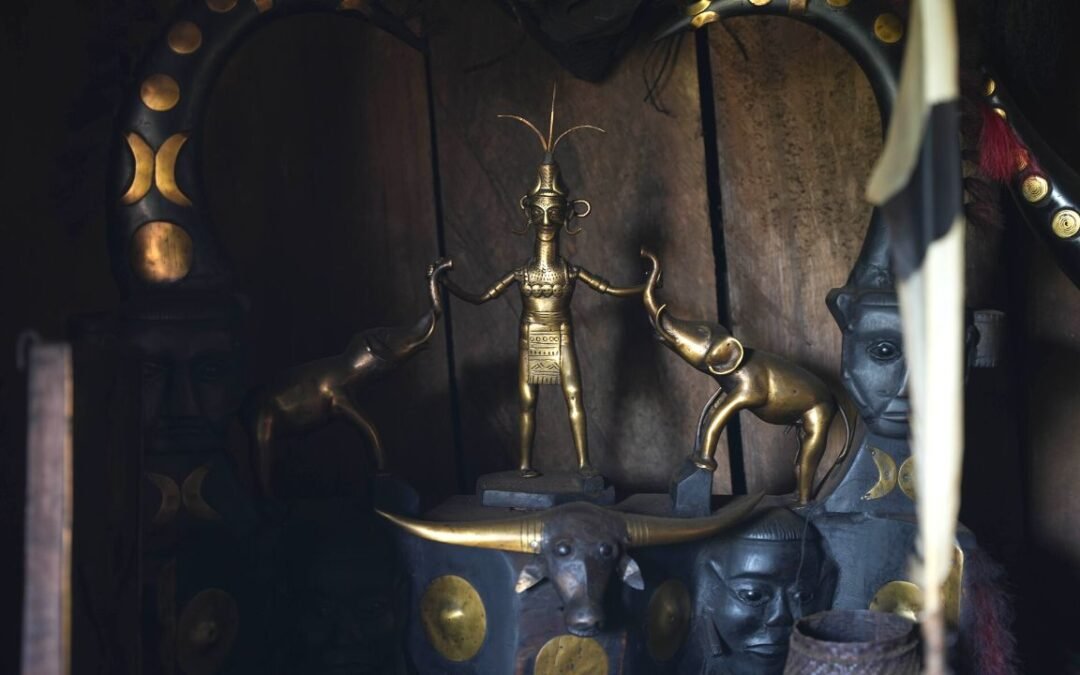
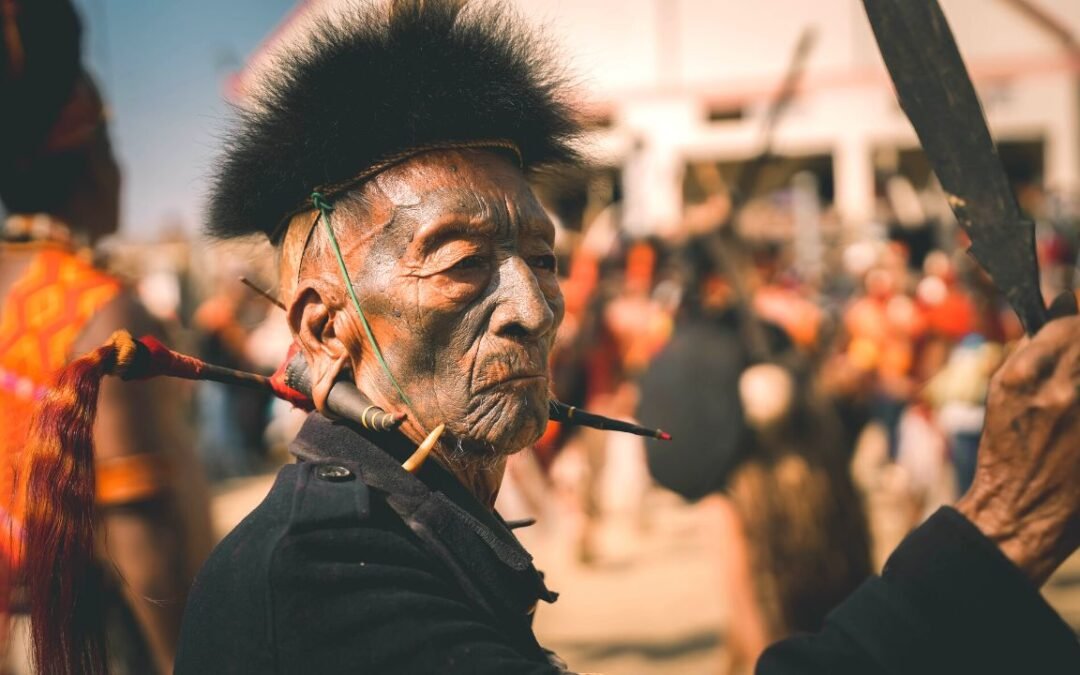
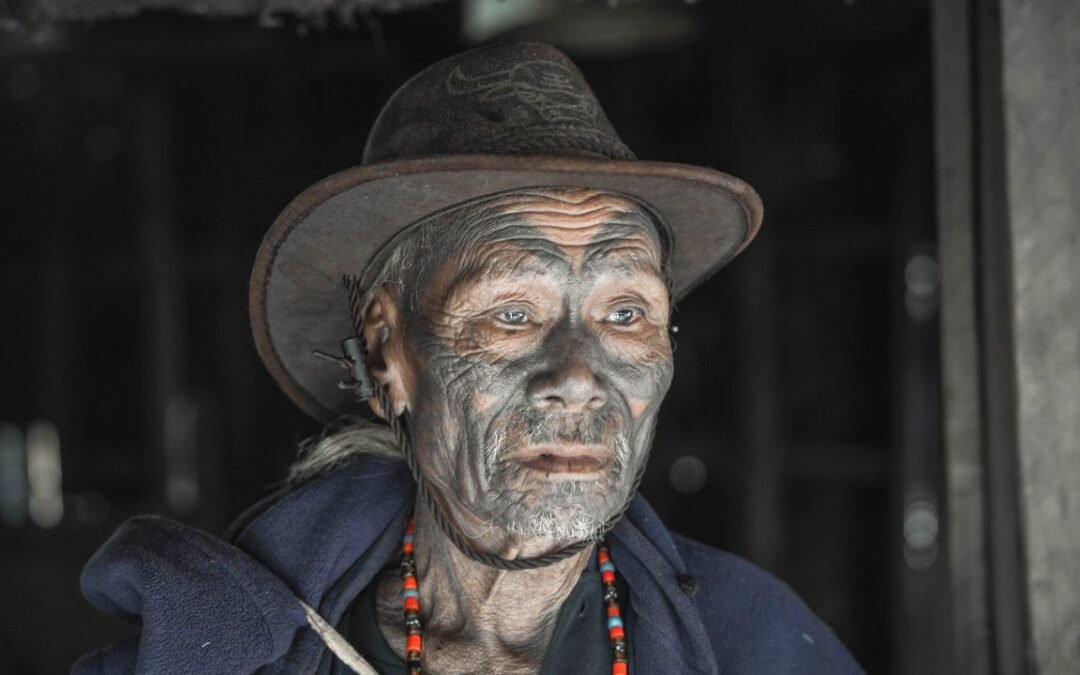


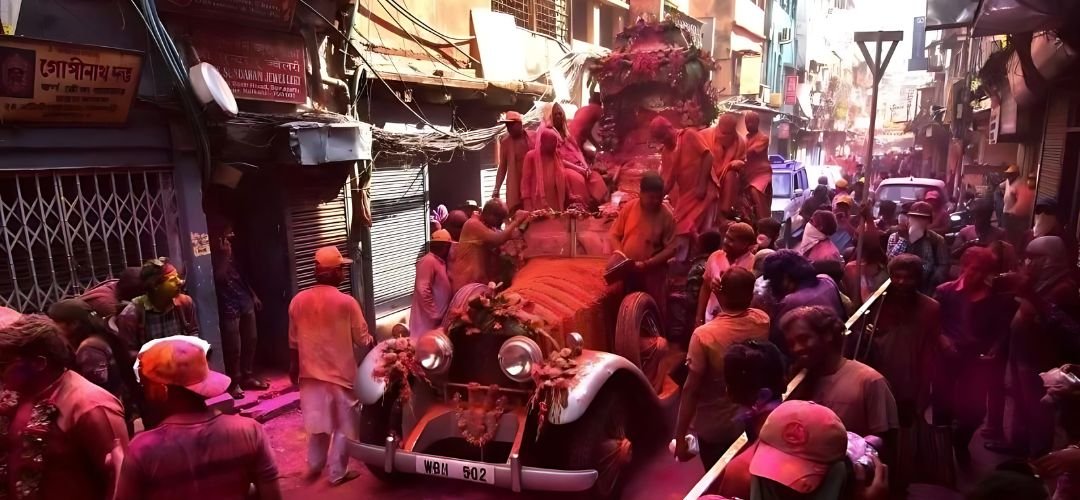
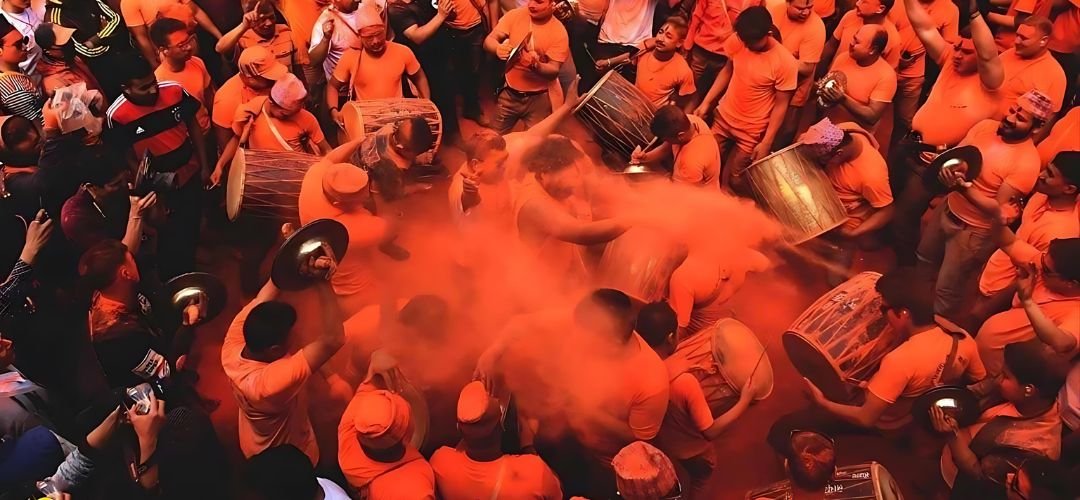
Wow, what a fantastic way to truly immerse yourself in the culture of another region. So cool that you got to experience the Festival of Festivals (a bold statement!). I also like the story of how it was named the Hornbill Festival, and it’s great to see that the tribes also understand the preservation of wildlife. Thanks for sharing!
Thank you, Chloe! Well, the moniker is indeed bold. Even though I personally do not agree with the moniker, it is a great and colourful festival and should be visited.
I have yet to visit Northeast India but I’m fascinated by how diverse it is. The Hornbill Festival would be the perfect introduction to these different tribes and cultures. Would love to experience the rice beer as well.
Thank you so much! Having rice beer is an experience in itself!
It would be nice to experience and join the celebration. It would be nice to watch the performances and get a glimpse of the unique tradition. Thank you for sharing this detailed guide. We also look forward to tasting the traditional food.
Thank you Clarice!
I have been wanting to go to Hornbill Festival from past three years. Unfortunately I have not been able to visit it. But I will definitely plan for next year and will visit it. I love that festive vibes of the north east and Nagaland is a very interesting place which I wish to visit for sure. Thanks for this guide, it will definitely help me in my planning.
Hornbill Festival is an extravaganza! I am planning to be there again this year!
This is a kind of festival I want to attend. Learning about different culture is always intriguing. I like the concept of Morung to keep the traditions alive for future generations. The festival food sounds yummy. But, you found the flavor was a bit strong while I found Indian food flavor was a bit strong. So maybe I will have to be careful. Hehe..
Thank you! The food is quite yummy. However, the cuisine here tastes a bit different from typical North Indian cuisine.
Oh wow! I love that they started it not long ago to celebrate. It looks like such a colorful festival, and it’s no wonder that people come from all over during the festival to experience it. I would love to do so!
Yes, Hornbill is quite colourful! Thanks for the lovely comment.
I am impressed with your article and photos. It’s a great story, exciting culture, and tradition. I haven’t been to this part of India yet. But I’d love to see this place. It’s great to know that the Hornbill Festival is celebrated at Kisama Heritage Village’s festival grounds in Nagaland. I would love to visit also the Morungs community.
Thank you so much, Agnes!
The moment one says Hornbill festival, you know it that it is going to be wonderful. My friends from North East have told me so much about it. Loved the photographs. I have read so much about hornbill festival over the years and I must say this one came out to be very refreshing. I have not been able to be a part of the festival yet. I bet you guys had a great time there. This festival is indeed the best example of keeping our culture, tribes, heritage, rituals well preserved and intact.
Thank you so much, Manjulika!
Are the lineups different each day? Is it worth attending the festival 2 back to back days?
Hello Ajay! Lineups are different in each day. And spending 2 days is worth if you want to experience the colourful culture of the state.
Loved the detailing and photographs. Would you consider a curated, small group tour for hornbill? I much rather visit with someone who has already experienced this, rather than via a tour agent!
Thanks Preeti! We would be glad to curate a group trip for Hornbill Festival. If you are interested, please do let us know in advance. We would be happy to do so!
The most detailed article I found.. If I am planning for two full days, should I be visiting towards the beginning, middle or the end of the festival? Or does it even matter?
It is better to visit at the middle of the festival, if you are there for 2 days only. However, Horbill is a grand affair. I am sure anytime will be great!